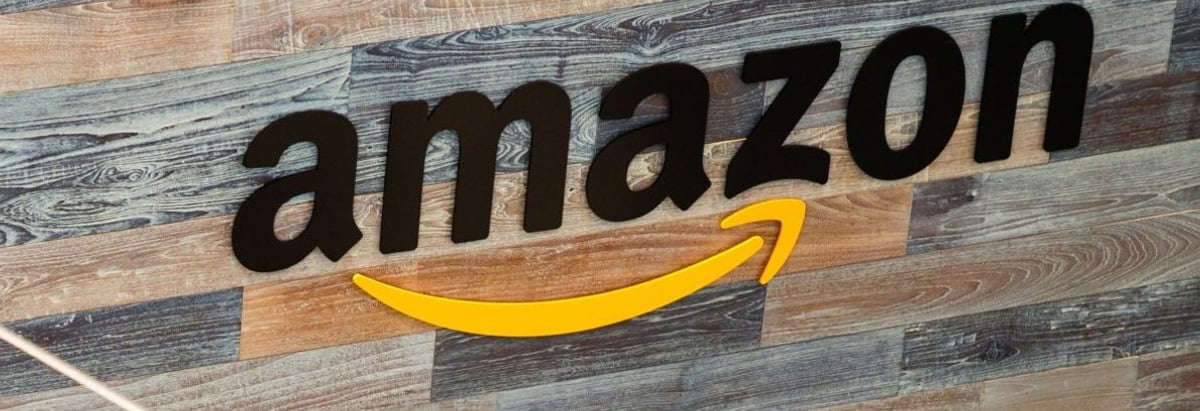- United States
- /
- General Merchandise and Department Stores
- /
- NasdaqGS:AMZN
Don't Sell Amazon.com, Inc. (NASDAQ:AMZN) Before You Read This

This article is for investors who would like to improve their understanding of price to earnings ratios (P/E ratios). We'll look at Amazon.com, Inc.'s (NASDAQ:AMZN) P/E ratio and reflect on what it tells us about the company's share price. Amazon.com has a P/E ratio of 88.81, based on the last twelve months. That is equivalent to an earnings yield of about 1.1%.
View our latest analysis for Amazon.com
How Do You Calculate Amazon.com's P/E Ratio?
The formula for price to earnings is:
Price to Earnings Ratio = Price per Share ÷ Earnings per Share (EPS)
Or for Amazon.com:
P/E of 88.81 = $1629.51 ÷ $18.35 (Based on the year to September 2018.)
Is A High P/E Ratio Good?
A higher P/E ratio implies that investors pay a higher price for the earning power of the business. That isn't necessarily good or bad, but a high P/E implies relatively high expectations of what a company can achieve in the future.
How Growth Rates Impact P/E Ratios
Earnings growth rates have a big influence on P/E ratios. Earnings growth means that in the future the 'E' will be higher. Therefore, even if you pay a high multiple of earnings now, that multiple will become lower in the future. Then, a lower P/E should attract more buyers, pushing the share price up.
It's nice to see that Amazon.com grew EPS by a stonking 356% in the last year. And earnings per share have improved by 66% annually, over the last five years. So we'd generally expect it to have a relatively high P/E ratio.
How Does Amazon.com's P/E Ratio Compare To Its Peers?
The P/E ratio essentially measures market expectations of a company. As you can see below, Amazon.com has a higher P/E than the average company (32.2) in the online retail industry.

Amazon.com's P/E tells us that market participants think the company will perform better than its industry peers, going forward. Clearly the market expects growth, but it isn't guaranteed. So further research is always essential. I often monitor director buying and selling.
A Limitation: P/E Ratios Ignore Debt and Cash In The Bank
The 'Price' in P/E reflects the market capitalization of the company. That means it doesn't take debt or cash into account. Theoretically, a business can improve its earnings (and produce a lower P/E in the future), by taking on debt (or spending its remaining cash).
Such spending might be good or bad, overall, but the key point here is that you need to look at debt to understand the P/E ratio in context.
Is Debt Impacting Amazon.com's P/E?
Amazon.com has net debt worth just 2.3% of its market capitalization. So it doesn't have as many options as it would with net cash, but its debt would not have much of an impact on its P/E ratio.
The Verdict On Amazon.com's P/E Ratio
Amazon.com trades on a P/E ratio of 88.8, which is multiples above the US market average of 16.5. While the company does use modest debt, its recent earnings growth is impressive. Therefore it seems reasonable that the market would have relatively high expectations of the company
When the market is wrong about a stock, it gives savvy investors an opportunity. As value investor Benjamin Graham famously said, 'In the short run, the market is a voting machine but in the long run, it is a weighing machine.' So this freevisual report on analyst forecasts could hold they key to an excellent investment decision.
Of course, you might find a fantastic investment by looking at a few good candidates. So take a peek at this freelist of companies with modest (or no) debt, trading on a P/E below 20.
To help readers see past the short term volatility of the financial market, we aim to bring you a long-term focused research analysis purely driven by fundamental data. Note that our analysis does not factor in the latest price-sensitive company announcements.
The author is an independent contributor and at the time of publication had no position in the stocks mentioned. For errors that warrant correction please contact the editor at editorial-team@simplywallst.com.
Simply Wall St analyst Simply Wall St and Simply Wall St have no position in any of the companies mentioned. This article is general in nature. We provide commentary based on historical data and analyst forecasts only using an unbiased methodology and our articles are not intended to be financial advice. It does not constitute a recommendation to buy or sell any stock and does not take account of your objectives, or your financial situation. We aim to bring you long-term focused analysis driven by fundamental data. Note that our analysis may not factor in the latest price-sensitive company announcements or qualitative material.
About NasdaqGS:AMZN
Amazon.com
Engages in the retail sale of consumer products, advertising, and subscriptions service through online and physical stores in North America and internationally.
Outstanding track record with flawless balance sheet.
Similar Companies
Market Insights
Community Narratives



